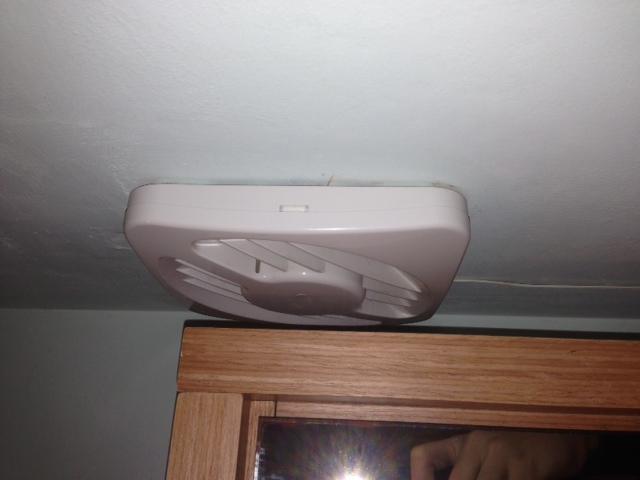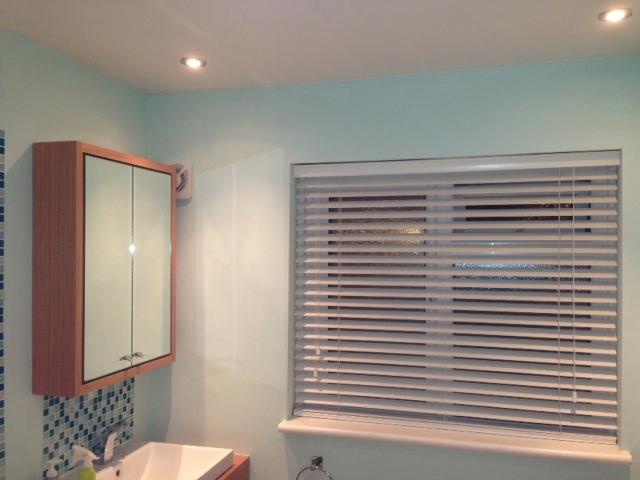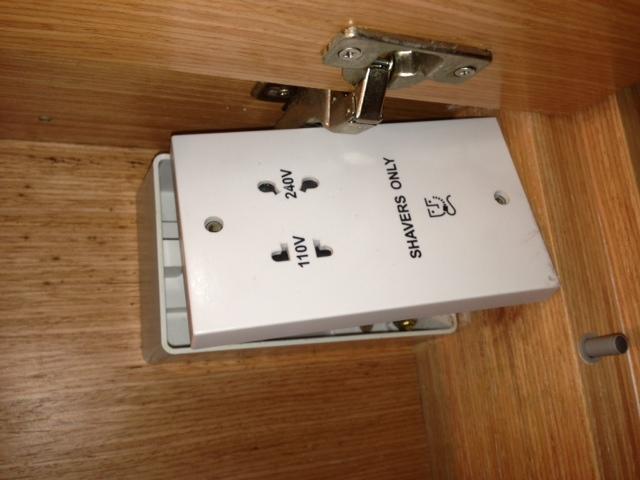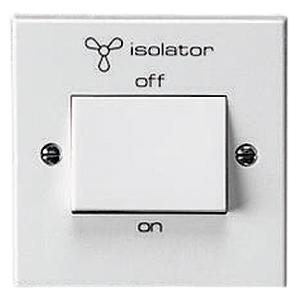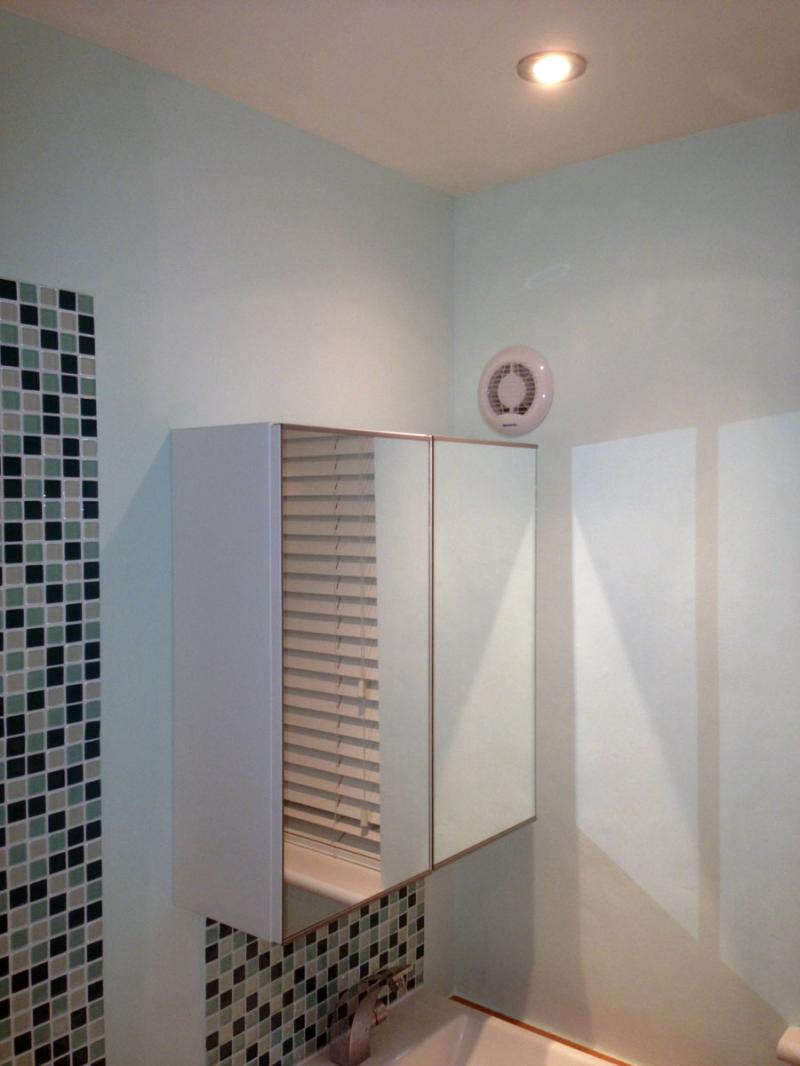Hi all. Just to quickly introduce myself, I'm not a skilled DIY-er, but, with guidance, can normally competently undertake relatively simple jobs around the home without calling in the cavalry (eg replacing the broken cooker hob with a new one, etc).
I have a question regarding the extractor fan in my bathroom. We are in a ground-floor flat, and the bathroom has an extractor fan situated on the external wall that activates when you turn the lightswitch on. There is a window in the bathroom. I've attached a number of photos to illustrate what I'm referring to.
When we have showers, the bathroom steams up immensely, causing mould spots to appear on the wall every few weeks (requiring a clean with bleach). The fan is always on when we have showers, and the top (smaller) window is open. When a shower is finished, and the bathroom is vacated, the main window is opened to allow the steam to escape faster.
The previous occupants had fitted a rather tall wall unit right infront of the extractor fan, which, to my untrained eye, seems rather silly, and, I assume, prevents proper extraction of the air from the room. The build-up of steam from a shower seems to confirm this for me. But, I have recently seen extractor fans that have a 'plate' mounted in front of the opening to the fan, which is basically much like the scenario with the wall unit being mounted a few centimetres in front of the extractor fan (eg http://www.extractorfanworld.co.uk/airflow-quiet-air-qt100b-129-p.asp ). This would suggest to me that a fan can perform fine even with something mounted closely in front of it. Is this true, and thus is the cabinet's position perfectly fine?
What are your thoughts? Is the unit too close to the extractor, and thus hindering it (hence the build-up of steam)? If not, why is there a build-up of steam? What more can we do to prevent this?
If the cabinet is too close, I'm happy to remove it and install a smaller one that will keep the extractor fan opening free. But this has brought up another issue; there is a wired shaver socket in the cabinet. What can I do about this? Is there an easy way to make it safe, and just tuck it in behind a new cabinet? I've unscrewed it in the pics below so you can see the type of wiring:
Finally, I have considered getting a more powerful extractor fan. Are there any that you would recommend? Additionally, I would like one that stays on either with a timer, or with a humidity sensor. Would this work with the set-up we have (ie the fan turns on when the bathroom lights are turned on, and turns off when the lights are turned off); would the fan stay on afterwards? I'm thinking it would just be de-activated as soon as we leave the bathroom and switch the lights off (not what we want).
I'd really appreciate your collective input - this is starting to drive me a bit nuts! Thanks.
I have a question regarding the extractor fan in my bathroom. We are in a ground-floor flat, and the bathroom has an extractor fan situated on the external wall that activates when you turn the lightswitch on. There is a window in the bathroom. I've attached a number of photos to illustrate what I'm referring to.
When we have showers, the bathroom steams up immensely, causing mould spots to appear on the wall every few weeks (requiring a clean with bleach). The fan is always on when we have showers, and the top (smaller) window is open. When a shower is finished, and the bathroom is vacated, the main window is opened to allow the steam to escape faster.
The previous occupants had fitted a rather tall wall unit right infront of the extractor fan, which, to my untrained eye, seems rather silly, and, I assume, prevents proper extraction of the air from the room. The build-up of steam from a shower seems to confirm this for me. But, I have recently seen extractor fans that have a 'plate' mounted in front of the opening to the fan, which is basically much like the scenario with the wall unit being mounted a few centimetres in front of the extractor fan (eg http://www.extractorfanworld.co.uk/airflow-quiet-air-qt100b-129-p.asp ). This would suggest to me that a fan can perform fine even with something mounted closely in front of it. Is this true, and thus is the cabinet's position perfectly fine?
What are your thoughts? Is the unit too close to the extractor, and thus hindering it (hence the build-up of steam)? If not, why is there a build-up of steam? What more can we do to prevent this?
If the cabinet is too close, I'm happy to remove it and install a smaller one that will keep the extractor fan opening free. But this has brought up another issue; there is a wired shaver socket in the cabinet. What can I do about this? Is there an easy way to make it safe, and just tuck it in behind a new cabinet? I've unscrewed it in the pics below so you can see the type of wiring:
Finally, I have considered getting a more powerful extractor fan. Are there any that you would recommend? Additionally, I would like one that stays on either with a timer, or with a humidity sensor. Would this work with the set-up we have (ie the fan turns on when the bathroom lights are turned on, and turns off when the lights are turned off); would the fan stay on afterwards? I'm thinking it would just be de-activated as soon as we leave the bathroom and switch the lights off (not what we want).
I'd really appreciate your collective input - this is starting to drive me a bit nuts! Thanks.


